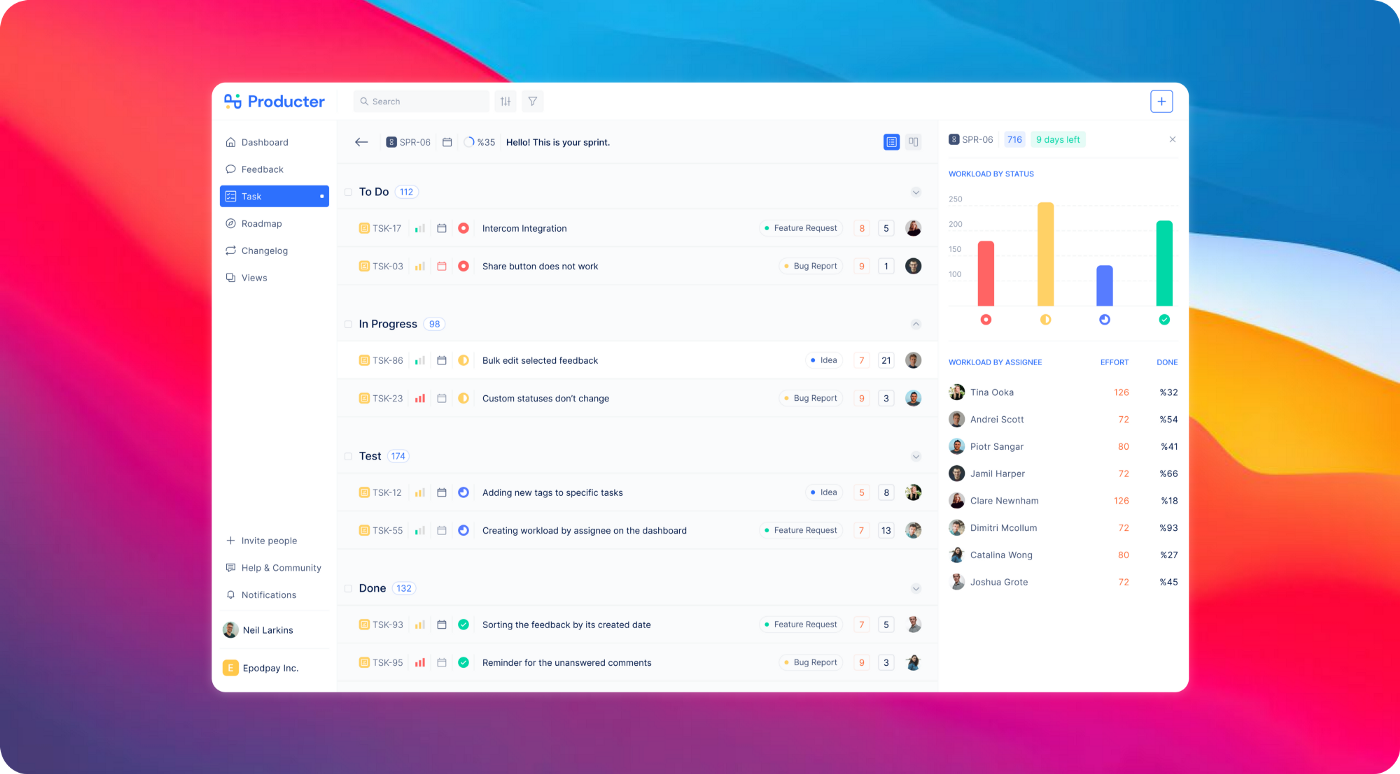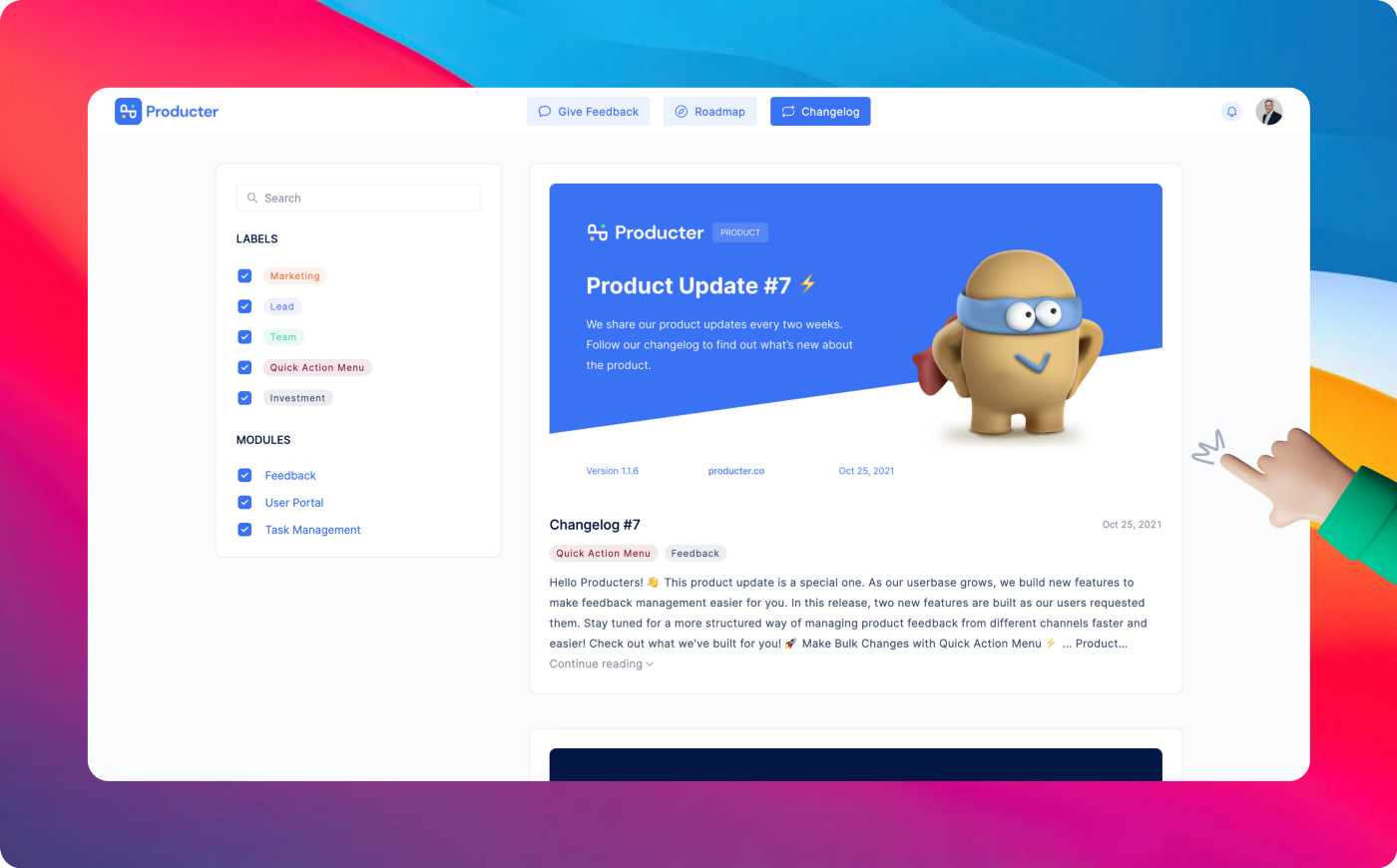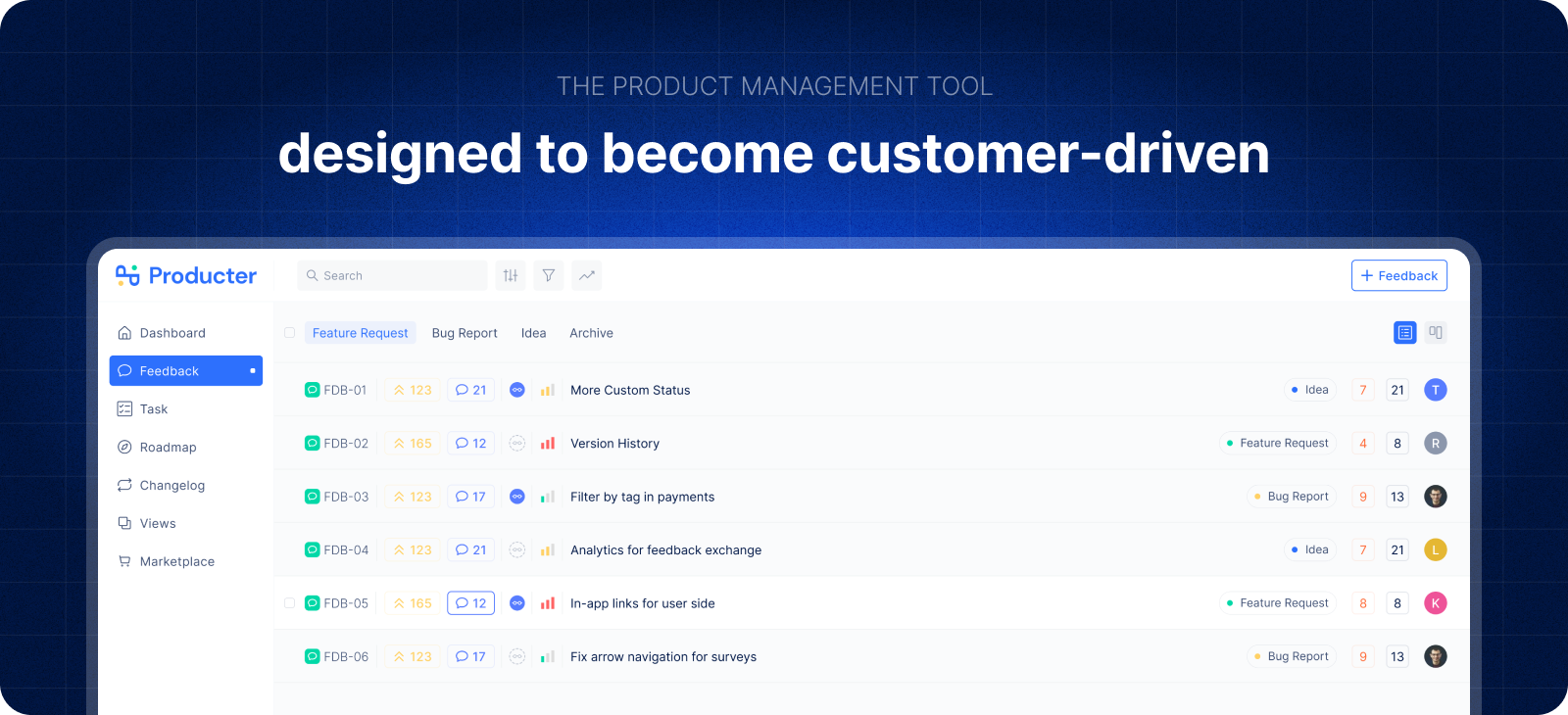When a startup gets off the ground, it faces many uncertainties and difficulties simultaneously. As everyone tries to get to point A from point B, you uncover what A and B are.

When we started walking down the same path as Producter in early 2021, we first listened to the experiences of many different voices. We have always sought examples close to our own and tried to learn from them along the way. At times, however, we had difficulty finding them.
Recipe for Success (?)
Success is variable for every business; The road to success is long and painful. You see, there is no shortcut or magic bullet for this.

As I write this post, I hope to help those who choose to walk down the same road by explaining our methods from the beginning. It would make me very happy if one of our experiences were useful to you somehow.🙏🏼
What inspired us to build Producter?
We were working together on the same product team with my co-founder Samet in our previous job. The customer-facing teams were providing a lot of feedback to us. Handling customer feedback along with day-to-day operations became nearly impossible.
Based on the problem we experienced, we rolled up our sleeves to mature the Producter idea. See Samet’s post “Finding a SaaS Idea Using Ikigai” for details on how the idea was born and developed.

What Gave Us The Most Benefit?
1. Idea Validation Stage
One of our biggest concerns as we set out to solve the problem was, “Am I in love with this idea?”

Entrepreneurs often skip the idea validation stage as they become too caught up in the problem and product idea they are trying to solve.
To avoid falling into this trap, we conducted product interviews with different personas and companies in the first months of 2021.
We divided these product interviews into two phases:
- Understanding the interviewed persona’s needs and the company’s product management processes
- Collecting feedback by demonstrating the Producter’s designs
It was very helpful to ask discovery questions to the interviewee before showing the Producter to avoid any positive/negative bias.
After interviewing more than 150 product people for three months, we improved our design based on the feedback we received. By doing so, we had the opportunity to question the product-market fit, and we avoided wasting development resources.
In addition to product interviews, we started collecting waitlist subscriptions with a simple landing page. 500+ product people joining our waitlist also contributed to the validation stage.
Currently, our waiting list has exceeded 2500 people 🥰 If you’d like to experience Producter, just leave your email on our website.
2. Impact of Communities
Depending on the vertical you are in, communities may have varying levels of influence. It’s undeniable that communities have tremendous power in the product management vertical.
The Slack, LinkedIn, IndieHackers, Facebook product groups are filled with incredibly active, feedback-oriented product people.
The first step is to identify the groups within your vertical, analyze which groups are more active, and optimize your limited efforts accordingly.
Another critical point is not to go to communities only to get.
As much as product communities help Producter’s growth, we also contributed by creating value-added content and sharing our experiences with product people in the community.
Besides being active in different communities, we also created the Producter Slack Community. It currently has more than 300 members. The best part is that these 300+ people are from 18 different time zones. The door is open to anyone who wishes to join our product community 🙌🏻
3. Content Marketing
One of the pitfalls at the beginning of the road is to think that the content created will reach very few people.
That’s exactly how I felt when I deleted my old Twitter account and created a new one — and obviously one with no embarrassing teenage tweets 😅
First month on twitter be like pic.twitter.com/IJisTC491P
— Markememes (@Markememes) July 23, 2021
Social media posts, blog content, sharing product updates, being active in communities — they are all growth moves that take time and effort.
We initially made the mistake of putting significant effort into all of them in a scattered way 🥲
Keeping consistency in content became difficult when we focused on the blog one month and the communities the next. In addition, we experienced a bottleneck in measuring marketing metrics.
We have reached the point where we have to ask, “How can a two-person marketing effort make a big impact?” Here’s how we got the answer:
Remix, optimize and continuously distribute the content.
How?
Think of a blog post you wrote giving hours, maybe days. You posted it on your blog. You shared it on your social media accounts.
The last thing you need to do here is to end the process and wait for the blog fairies to increase your metrics.
- Remix: User your blog in different formats and share it again and again. You can create many formats from a blog, such as Twitter thread, Instagram post, Quora reply, SlideShow presentation, and more.
- Optimize: If read and engagement rates are still low, make changes to the title and content of your blog and share it again. It will allow you to both reconsider this blog and learn for your next one.
- Distribute: After sharing your blog on social media, do not forget to share it in the relevant communities. This is also an opportunity to provide value to product communities with quality content.
4. Consistency and Sustainability
Failure of a growth strategy may be due to not regularly putting enough effort into it.
The content marketing strategy I mentioned above is about taking the wind of the communities at your back and not throwing the towel halfway.
Apart from these, another point that we consistently and happily keep doing has been to share Producter’s strategic and product updates with our audience 💙
- Growth and Strategy Updates: We share what we have experienced at Producter every month on many different topics such as growth, marketing, investment, team since the first day.
- Product Updates: We launched the private beta in July! 🎉 Following the launch, we shared updates every two weeks about bugs fixed in the product and new features added.

Maintaining active communication with users through updates and informing them when their feedback is executed helped us in many ways. Here are a few of them:
- Producter has built trust relationships with its users through the portal despite being in its early stages. In a short time, our users counted on us and began using Producter actively.
- Being informed quickly and transparently about their feedback contributed significantly to Producter’s user retention rate.
Consistency and sustainability will show your users in the early days of your startup that you are “not dead” and build trust that will help them decide to use your product.
Producter is a product management tool designed to become customer-driven.
It helps you collect feedback, manage tasks, sharing product updates, creating product docs, and tracking roadmap.






